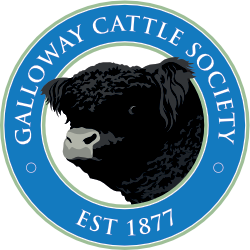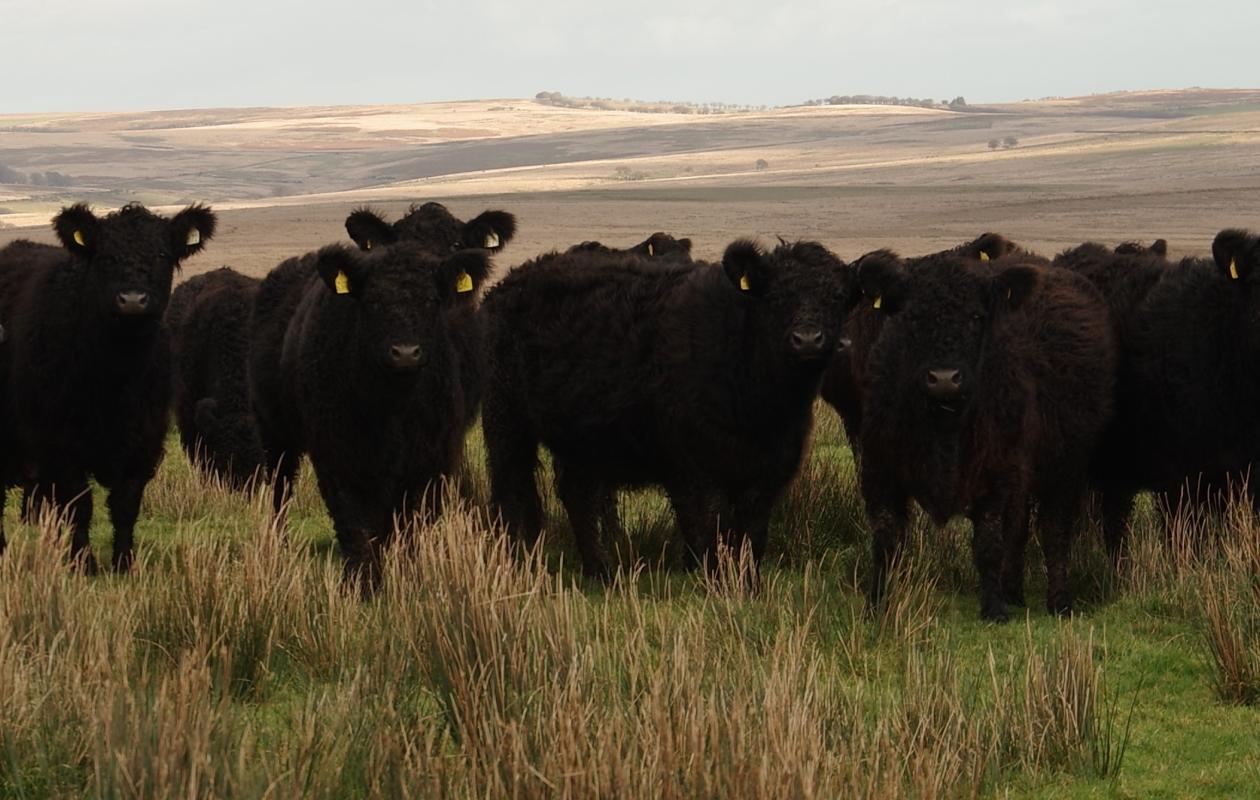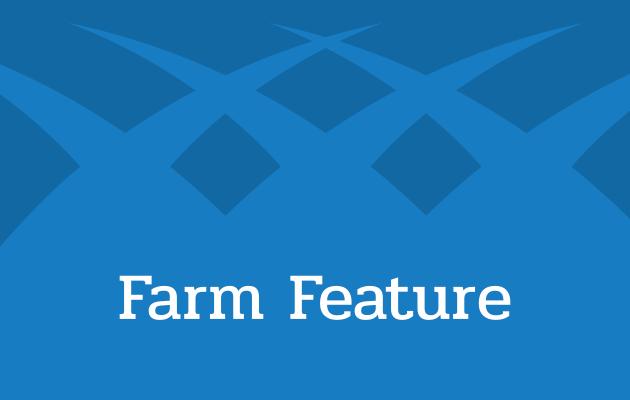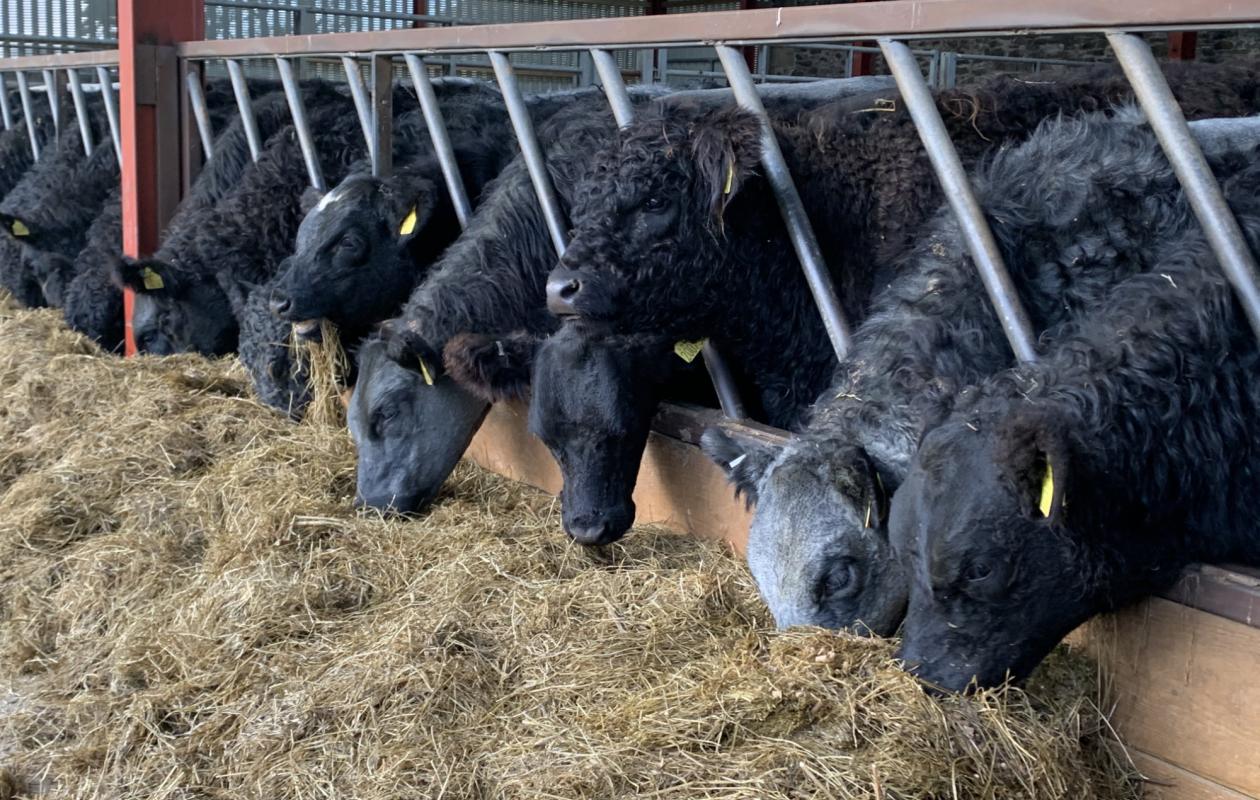After 15 years living in the South East of England, Russ Ireland felt the draw of returning home to farm in the Lake District with his family - and he chose Galloway cows to run alongside the Herdwick ewes on the farm’s rough, Open Access land.
Russ is the third generation of is family to farm Newhouse Farm, Drigg, near Holmrook on the west coast of Cumbria since 1948.
The farm extends to around 1,400 acres of mostly marginal land. The majority of the land is sand dune and lowland heath with some saltmarsh - and the Galloways are proving an efficient and environmentally friendly choice.
“I left home at 18 to go to university. After finishing, I moved to the South East of England where I met my wife and started a family,” said Russ, who studied zoology and worked in IT before returning to Cumbria in 2012.
“After 15 years away from the farm and with young children approaching school age we decided the time was right to move back home and help my dad on the farm.
“Now able to work on the farm full time, we decided to get some cattle to complement the sheep enterprise. Newhouse Farm was no stranger to Galloway cattle as my dad had a pedigree herd in the 1970s and 80s so it didn’t take much thought as to what breed we should go for!”
Newhouse Farm is home to Russ and his wife Faye and their children Elliot, 11, Chloe 10, and Spencer, seven, who enjoy working alongside Russ’s parents Norman and Beryl.
Russ said: “We needed cattle that would thrive on poor quality grazing, out-winter and require very little maintenance. Galloways tick all the boxes.
“We also wanted cattle that were quiet and easily handled. Our rough grazing land is Open Access land and we get lots of people/dogs on the land so we cannot have wild cattle. Galloways and other native breeds, if handled correctly and with plenty of human contact, are great to deal with.”
While numbers can fluctuate from year to year, the Irelands run around 60 pedigree Galloway cows.
A proportion of the herd is put to a Whitebred Shorthorn bull and the others are put to the Galloway with calving in May and June.
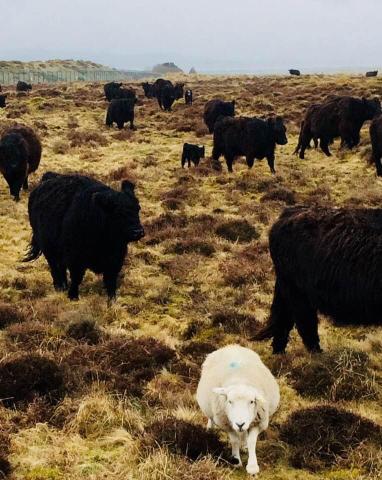
The herd remains on the rough grazing all year round, but they are brought into enclosed pastures for calving.
The Irelands have calved them out on the extensive grazing land but they were difficult to find and they were easily missed in the undulating dune areas. This was taking too much time looking for them so the cows are now kept handy during calving.
The cows and calves remain out on the rough grazing until February until the calves are weaned and housed for a few months. The cows remain outside.
The Blue Grey and Galloway Bullocks are mostly sold privately at around 16-17 months to regular buyers, some of these are sold to a local fell farmer who grazes the fells around Scafell Pike. Bullocks are also sold occasionally at the Kirkcambeck sale at Longtown.
Blue Grey heifers are also sold at 16-17 months old at Newcastleton. Trade for the Irelands in 2021 was very good but what was most pleasing for the family was that the buyers were return customers.
Galloway heifers, usually in calf, are sold privately or sold at the pedigree sales at Carlisle.
When it came to purchasing foundation stock for the herd the Irelands looked for animals with the right characteristics for the farm.
Heifers were purchased from a number of herds including Kilnstown, Romesbeoch, Drumhumphry and Barlaes to name a few.
The current stock bull is the home bred bull Newhouse Prince, sired by Top of Kilnstown out of Barlaes Nancy 147th.
“We are really pleased with the way Prince has bred. His offspring have proven to be very smart with great skins and plenty of character. His daughters, Molly and Sarah 3rd recently taking best pair of calving heifers and Molly champion female at the Carlisle Autumn Sale. Our only problem is that we are limited on the number of cows we can use him on.
“We added Ace of Whitehill to the herd which we purchased at the Carlisle 2021 Spring Sale. We ran him with a handful of heifers this past summer but next year we plan to use him with more cows. We are excited to see how he breeds.

“Top of Kilnstown was our first stock bull and he has bred some fantastic daughters, many of which we have retained in the herd and they are full of the traits we were after.
“Up to now, these have been put to a Whitebred Shorthorn bull but it will be nice to see how Ace gets with them.
Herd numbers are at their optimum so the concentration now is on breeding quality into the herd.
A lot of females have been retained in the herd and Russ is pleased with what has been bred at Newhouse.
The emphasis is on many of the traditional traits in the Galloway breeding such as a thick brown coat and good square head but Russ says attaining these traits does not mean the cattle should be small and “old fashioned”. The aim is to breed a good sized animal, good on its feet with plenty of character.
“We are really pleased with the way the cattle have done, in terms of the land they have reduced the rank grasses, in turn improving the grazing for the sheep. The cattle are very mobile and can move around a great deal,” said Russ.
“We have an estuary that runs through the land and the cattle think nothing of crossing through it even swimming it at high tides which is very nerve racking if you happen to witness it!”
The Galloways complement the bought-in Herdwick draft ewes, which are put to the Texel and the gimmers are retained.
The first crosses are put back to the Texel and the Texel cross Herdwicks do well on the rough grazing land and rear good lambs. A proportion of lambs are sold finished straight off grass, the rest are sold store.
The farm is in a Higher Level Stewardship scheme which is coming to an end.
“I am concerned about how the imminent changes to the support available to us will impact us, both financially and in terms of how we manage the land.
“Probably like a lot of farmers, I am concerned with the direction the policies are going in that there is too much emphasis on ‘re-wilding’ and ‘nature recovery’ and not enough thought on national food security, traditional livestock farming practices and the rural communities they contribute to.

He said: “We are very limited by the marginal land we have. We try to be as efficient as possible by keeping costs down and we try to make the best of what we produce and sell.
“Farmers traditionally re-invest any profits back into their businesses; if farm incomes are reduced then all those industries that feed off farmers will have to take a hit as well.
“It’s really good to see that livestock has been a good trade for the last couple of years but it’s only where it should be. Over the last few decades our costs have gone up astronomically, but the price we got for our livestock has gone up relatively little. Let’s hope the trend we have seen the last couple of years continue and we get a decent price for our produce.”
Native cattle have proved to be the right choice for the Ireland family and Russ can see why other producers have also been convinced:
“Aside from the stewardship schemes that promote native breeds I think one of the main reasons is that native breeds are more sustainable, low input, low maintenance than some of the continental breeds.
“The bigger continental breeds take more looking after. It’s ok having massive calves but you have to get them out alive and there are costs associated with that such as caesareans and the impact on the cow. We haven’t had to assist with a calving for the past two years. The calves are usually up and sucking in very little time.
“Native breeds also taste better. Many large meat processors seem to have lost touch with the slow maturing, grass fed process that native breeds follow. The breed itself and the feeding make native breeds tastier and more flavoursome. I know a number of local butchers and farm shops that only sell meat from native breed cattle,” he added.
